Duration: 31 minutes
Season 2
Episode 4
Championing L&D’s true value: Making learning a business priority
How can L&D overcome the 3 biggest challenges facing companies today? Why’s L&D failing to get approval from the C-suite? Dr. Keith Keating, the award-winning author of “The Trusted Learning Advisor” joins us to answer these questions.
Plus, we cover how to create a culture where L&D’s value isn’t just a number, and the critical importance of positioning yourself one step ahead of tech trends.

Key takeaways:
L&D teams should shift from delivering training to becoming essential business partners. To stay relevant, they must deeply understand the company’s goals and actively contribute to solving problems. Not just respond to requests.
Employee learning and development is crucial for addressing three organizational challenges: closing skill gaps, keeping people engaged, and retaining talent. Through upskilling, reskilling, and fostering development opportunities, L&D helps businesses overcome these challenges and avoid risks (i.e., losing talent and falling behind competitors).
Generative AI (i.e., ChatGPT) is changing how L&D operates. AI can create training content quickly, so L&D professionals should focus on other areas that AI doesn’t (yet) have power. For instance, providing strategic guidance and aligning training with business goals.
Instead of just trying to demonstrate the value of learning and development in the workplace through traditional ROI terms, L&D teams should highlight success stories. Opt for qualitative data rather than quantitative. For example, employees who improved or stayed with the company because of high-quality training. Such stories have the power to show the true impact of learning and development for employees, which goes beyond financial metrics.
Building trust with company leaders and employees is crucial for L&D professionals. To achieve this, they should start by understanding the business and listening actively to stakeholders and learners. Research, qualitative, and quantitative data are evidence-based, allowing L&D experts to earn credibility and show their strategic importance within the business.
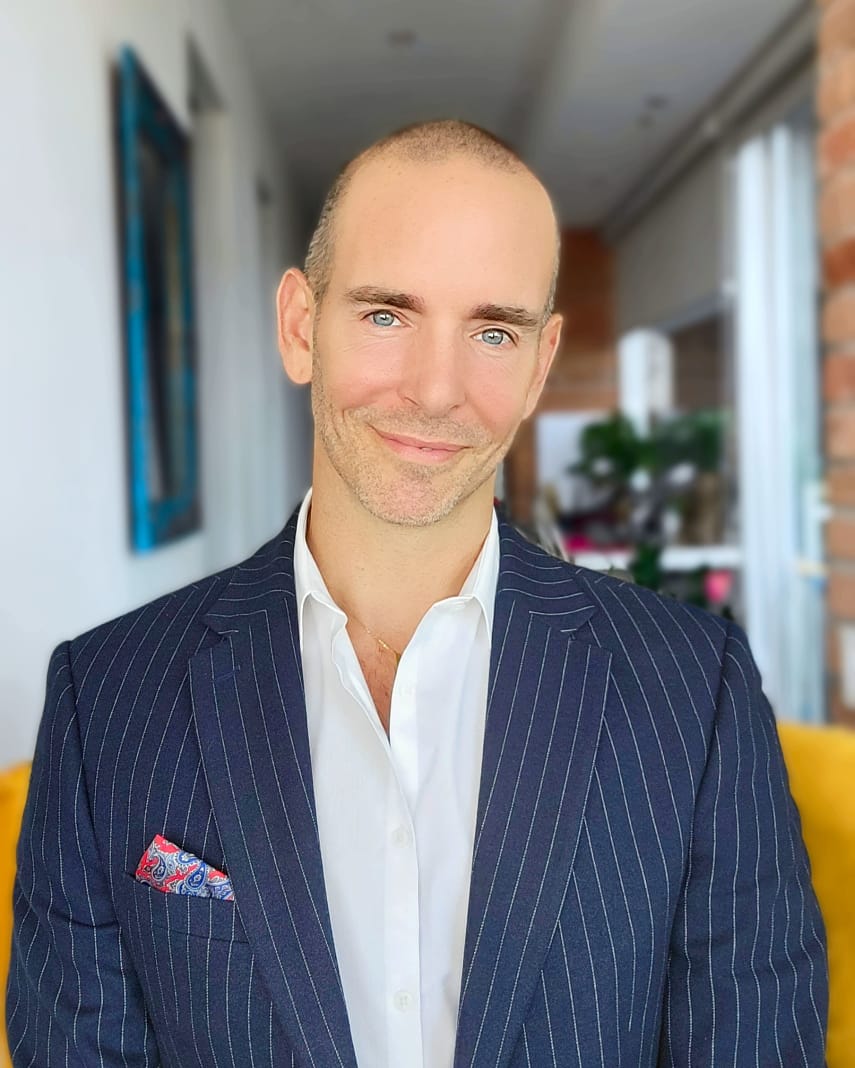
Dr. Keith Keating
About our guest:
Dr. Keith Keating is a Chief Learning Officer at BDO and Academic Director for the University of Pennsylvania’s CLO doctoral program.
A respected industry author and keynote speaker, he has more than 20 years’ experience in the Learning and Development (L&D) industry, working with the likes of HSBC and General Motors.
Share episode
Want more resources on this topic?

Research: What employees want from Learning & Development in 2024
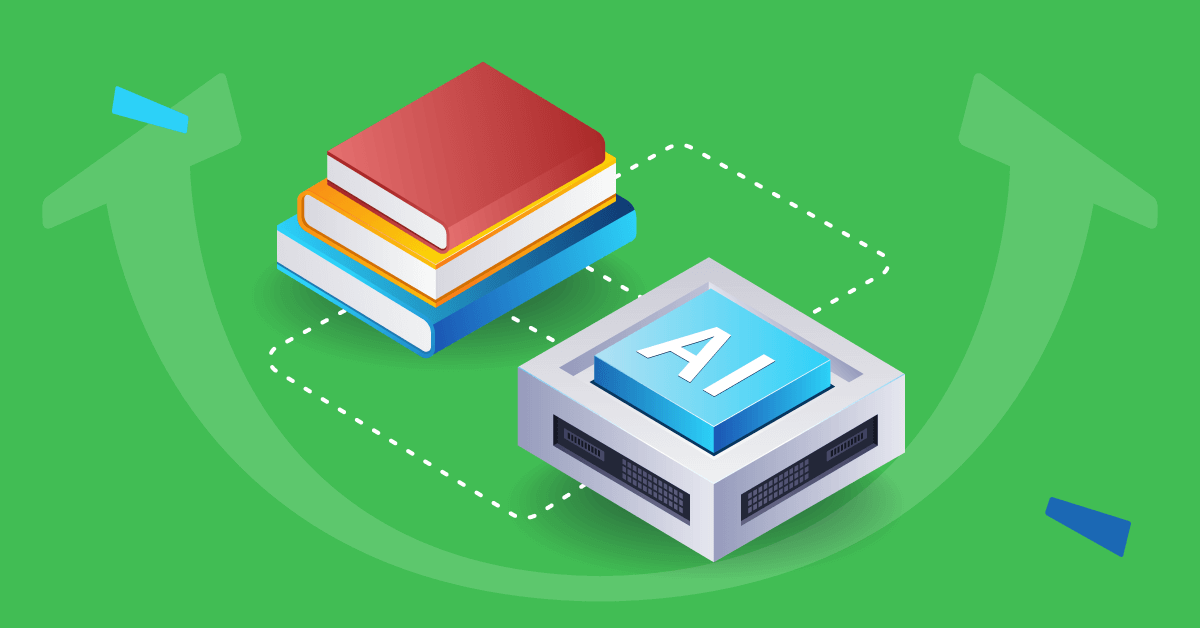
AI in Learning & Development: Use cases & benefits
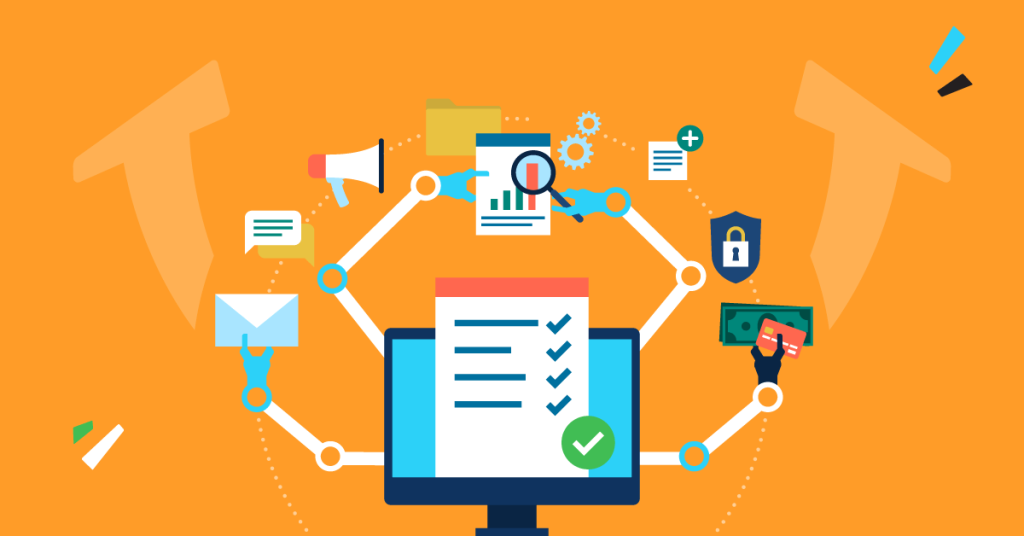
Skilling: Overview of employee upskilling and reskilling
More episodes we think you’ll love
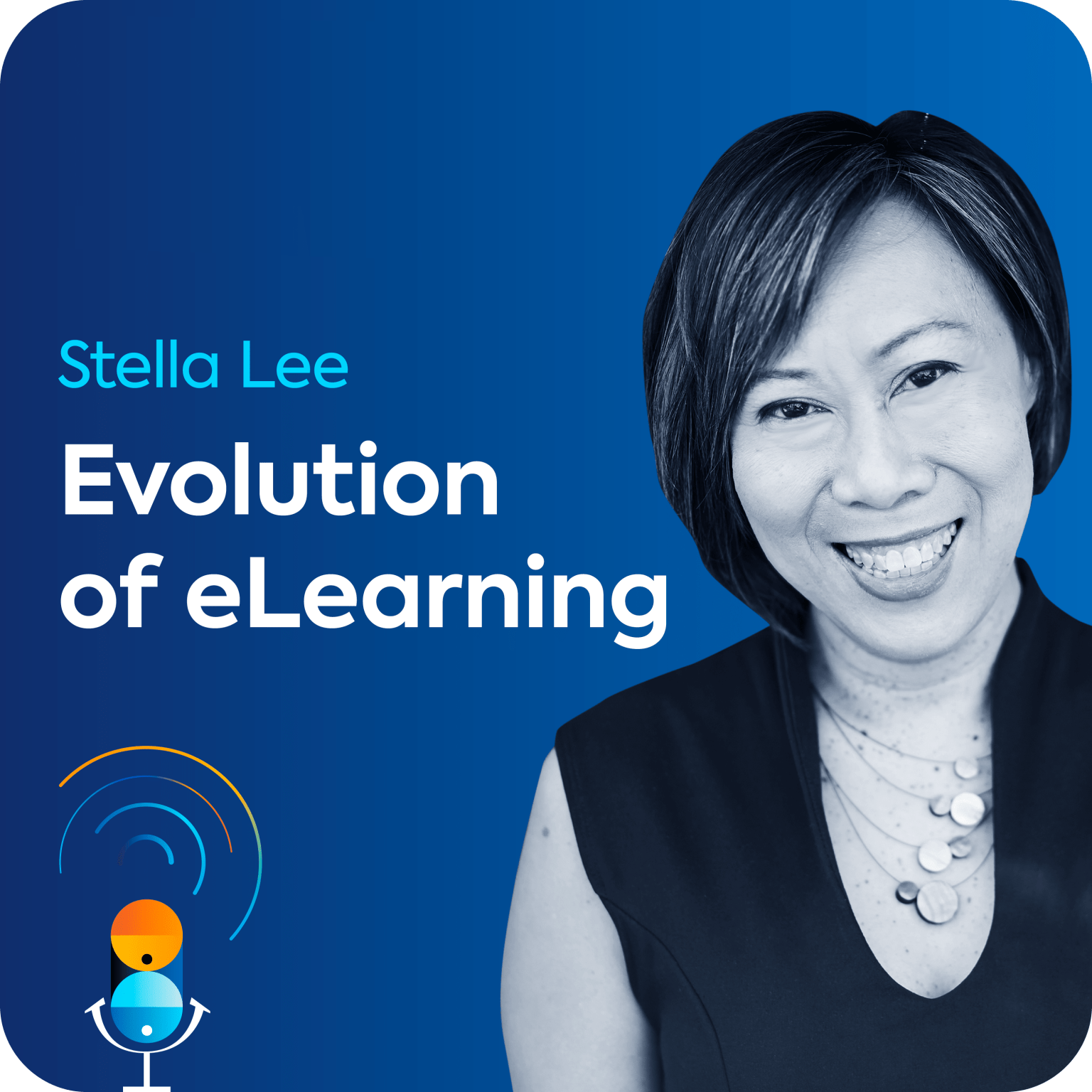
What does the surge of generative AI mean for the future of L&D? And how will the roles of L&D pros be reimagined in response? Season two of our podcast kicks off with Director of Paradox Learning, AI strategist, and eLearning expert, Stella Lee. Together with Lee, we’ll unpack why picking the right AI tools is like shopping for a car and reveal the dos and don’ts of upskilling an AI-literate workforce.
Go to episode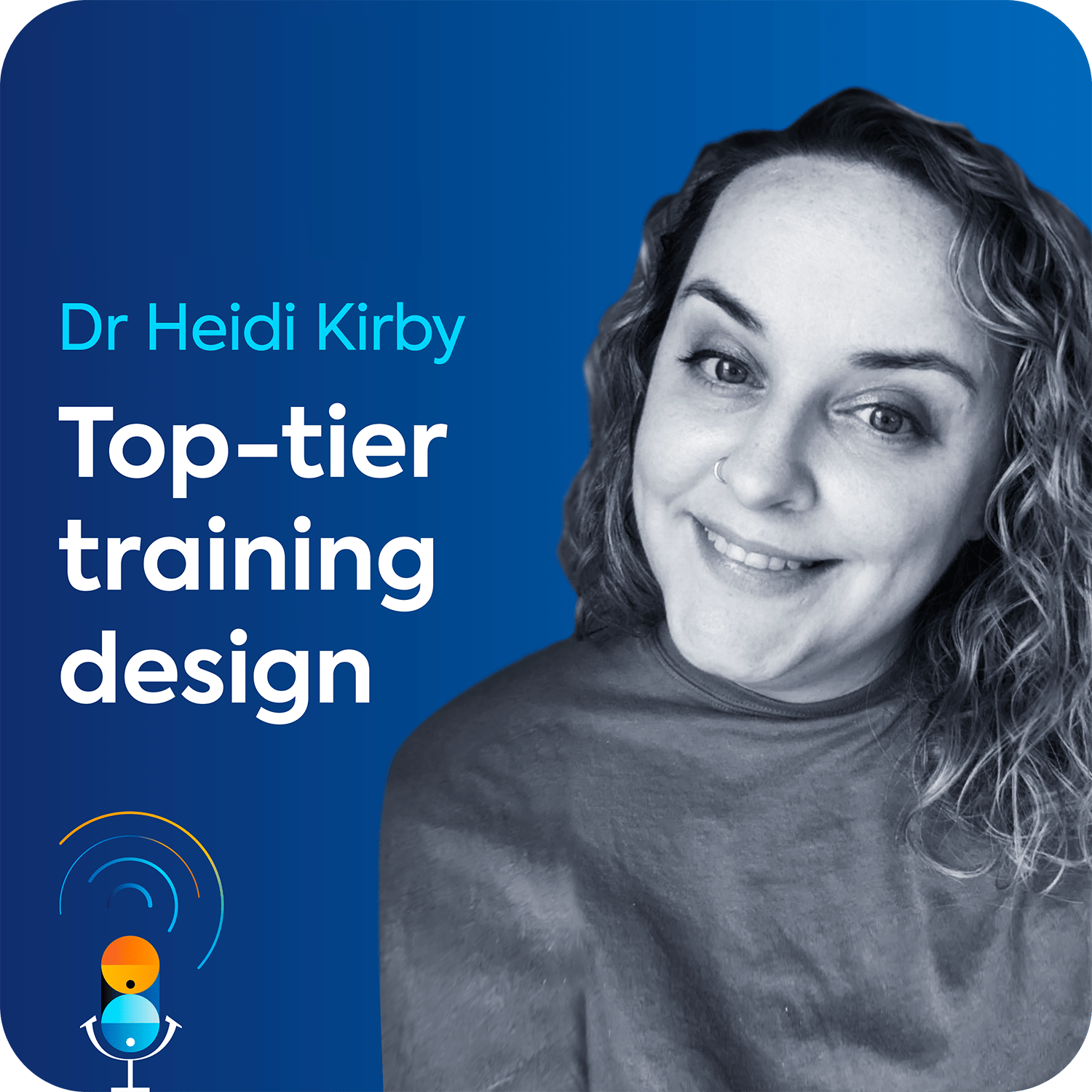
What are the 5 key elements of relevant training? And what’s the 1 training metric that could lose L&D pros their jobs? In this episode we invite L&D consultant, Instructional Designer, and fellow podcaster, Dr. Heidi Kirby to share her experience and give us actionable advice on course creation.
Go to episode
What are the 3 power skills every professional needs for the future? How do the human skills employees build in their personal lives benefit the workplace? Educational expert and author Dr. Michelle Weise explains how rapid technological innovation is demanding a change in the way we approach learning and work.
Go to episode
Never miss an episode! Get every new drop right in your inbox
By clicking the Subscribe button, you accept and consent to receive the type of content mentioned above. Please review the TalentLMS Privacy Policy for further information.
Full Episode Transcript
[00:00:00] Host: Welcome to Keep It Simple, a podcast where we’re challenging business and leadership experts to cut through the noise of the corporate world and get to the bottom of what makes the workplace actually work. I’m your host, Nina Vogia. Keep It Simple is brought to you by [00:00:30] TalentLMS, the training platform built for success and designed with simplicity in mind.
[00:00:36] Together, let’s uncomplicate what makes a winning workplace. You can find out more at talentlms.com
[00:00:47] on today’s episode.
[00:00:48] Keith Keating: If you are just acting like an order taker in the years to come, are you going to be relevant and necessary? No. But if you are a strategic business partner embedded in their business, [00:01:00] understanding their business, thinking proactively to solve problems, then yes, there is a value proposition there for you.
[00:01:06] Host: Why is L&D still seen as a business expense rather than an effective and lucrative investment? And what can professionals do to draw attention to its value and true potential? We sit down with Dr. Keith Keating, award-winning author of the Trusted Learning Advisor and a man with over two decades of experience leading learning teams for global companies.
[00:01:28] He outlines [00:01:30] why it’s critical that L&D professionals evolve from mere training providers to strategic business partners and breaks down how they can go about getting a seat at the table. Stay with us.
[00:01:51] So, Keith, thank you so much for taking the time to be with us today. It’s so great to have you sit down and share your expertise with us. How are you [00:02:00] doing?
[00:02:00] Keith Keating: I’m doing good. I’m doing good. I can’t wait to keep it simple.
[00:02:05] Host: Perfect. So we’re ready to go. So, I hope you don’t mind, but I’d love to throw you in the deep end with our first question, especially as you’ve talked about this in your book, The Trusted Learning Advisor.
[00:02:17] Why do you think the value of learning and development is often overlooked in organizations?
[00:02:24] Keith Keating: It’s hard to quantify. It’s hard to qualify. [00:02:30] You know, L&D is, in my opinion, the backbone of any thriving organization. You know, we are the ones that ensure employees are growing, they’re adapting, enhancing their skills.
[00:02:45] As a result of that, it drives things like innovation. It improves performance. It increases overall organizational agility. but yet We struggle with being able to put a [00:03:00] dollar amount to that, although I don’t necessarily agree. It should always be related to a dollar amount. We struggle to talk about the value of it.
[00:03:10] I think that, unlike other business functions that show immediate returns, the benefits of L&D unfold over time, you know, just because you went and you took a class last week when you leave, you’re just not poof magically delicious all of a sudden, it takes time to actually learn. [00:03:30] You need sustainment. You need application.
[00:03:32] And so there’s this longevity that results of it. And so it makes it a challenge to see kind of that direct return on investment. And I would say a second reason is we tend to thought of as a cost center rather than a strategic driver of business. And in reality, we, we. Work closely with organizational goals.
[00:03:56] We help build those capabilities. So I think [00:04:00] it’s about shifting the mindset of what is value, what is impact, and how do we quantify and qualify that?
[00:04:09] Host: That’s so interesting because, you know, when I think of learning and development departments, I see how they help organizations transition from the past to the future, in a way.
[00:04:22] Can you tell us why you think now more than ever it’s critical to recognize the value of L&D, both for learning and [00:04:30] development professionals and for organizations more broadly?
[00:04:34] Keith Keating: Three reasons come to mind. Skill gaps, employee engagement, and employee retention. These are the three largest organizational challenges that exist across the board.
[00:04:49] I’ll limit it to at least North America, although I would say probably globally at this point. So if you think about those three challenges, Skill gaps, engagement, [00:05:00] retention. We, L&D, are the ones that are aiming to solve those problems. When we have skill gaps in employees, we need to upskill them, reskill them, second skill them.
[00:05:11] That’s our focus. When employees are disengaged, our focus is to try and keep them engaged to helping them grow and develop In 2021 to 2022 McKinsey did research interviewing thousands and thousands of people who had proactively [00:05:30] quit their job proactively voluntarily, I guess is the right word, quit their job.
[00:05:36] They said the number one reason was because they didn’t have any growth or development opportunities. So people are literally quitting their jobs because they don’t have opportunity to grow and develop. So, who are the ones that are creating those developmental opportunities? We are. Gartner says that this is a trillion-dollar issue.
[00:05:56] In North America. So I’m answering kind of two questions [00:06:00] here. The first one you asked was, why are we having problems identifying our value, especially when we have tremendous value. So, these three challenges exist. We’re trying to solve those challenges, but yet we’re not able to quantify it. The second reason that this is our time is gen AI.
[00:06:19] Gen AI is a fantastic tool. I use it every day. It is my brainstorming partner. I find that those who haven’t used it are the ones that are [00:06:30] fearful of it. Gen AI is going to change how we focus on L&D in organizations. It literally gives every single person a custom coach, mentor, brainstorming partner.
[00:06:46] It allows us to personalize learning, development, training. We’re not there yet. It’s going to be there pretty quickly. But my point is, Our business partners are pretty soon going to figure out they [00:07:00] can go to chat GPT and say, create me a 30 minute training on sales skills, and then they can export that into gamma, and then they’re going to have this beautiful presentation.
[00:07:11] They didn’t need to talk to us at all for that. So it’s forcing us to evolve to being trusted learning advisors rather than just order takers, because Gen AI is the perfect order taker. For us and our business partners are going to figure that out. And then they’re going to say, well, why [00:07:30] do I need L&D?
[00:07:32] And it’s a great question. If you are just acting like an order taker in the years to come, are you going to be relevant and necessary? No, but if you are a strategic business partner embedded in their business, understanding their business, thinking proactively to solve problems, then yes, there is a value proposition there for you.
[00:07:52] And then I think the third reason is just the general, it’s time to evolve. We’ve been order takers for far too [00:08:00] long. We have so much value that we can provide. And if we do not evolve, we are going to be extinct.
[00:08:11] Host: I’m really glad because you’ve touched on quite a few things I want to ask you later on. But one of the big things that I’m taking from what you’re saying, and I know you’ve also mentioned this in your book, is that L&D professionals have to be ahead of the tech.
[00:08:27] They have to keep up with it. They [00:08:30] have to be proactive, as you just said, and know how to best utilize it to also make that differentiation between order takers, as you said, and partners.
[00:08:42] Keith Keating: A hundred percent. So one of the things that I advocate for is having the biggest toolkit possible. You know, if you were building a house and the first contractor showed up, and she just had a hammer and then the second contractor shows up, and she backs up this big truck and [00:09:00] there’s tools and machines in the back of it, and you have no idea what they are, but you just see, hey, there’s a lot more
[00:09:08] things that you have that you’re going to be able to provide me, you’re probably going to go with that second contractor. The same applies for us. We want to have the biggest toolkit possible, which means you need to understand all the learning technology tools that are out there, all the vendors that are out there, or the difference between LXPs.
[00:09:25] You know, what is an LXP? Why are people using them? Are they using them? Who’s using [00:09:30] them? What’s the use case for them? What’s the difference between Percipio and DeGreed and Cornerstone, three LXP providers? What’s the difference between VR, MR, AR? When might you use one over the other? So, it’s our job as learning development practitioners, as trusted learning advisors, to understand all those tools.
[00:09:50] And that includes Gen AI. I feel like so many people are waiting for permission to start to use it. I was at a conference [00:10:00] recently, and one of the keynote speakers, this was only two months ago, one of the keynote speakers, the opening keynote, was talking about gen AI, and I sat there thinking, wow, they really designed this conference poorly.
[00:10:13] Like, why are you talking to us about gen AI? Everybody in here already knows it. And then I’m looking around the room, and I’m seeing people feverishly taking notes. And then one person raised their hand and said, can you tell me about the ChatGPT? And I was like, wait, what? [00:10:30] And then he asked again. He’s like, wait, what?
[00:10:32] And she goes, the chatgpt. And he goes, you mean GPT? She’s like, yeah, what is that? And I was like, oh my gosh, they did design this correctly because these people still don’t know what this is. So moral of the story is we have to be in front of all of these tools. Some people will say, well, my company doesn’t allow me to use it.
[00:10:56] Okay, fine. You have a home computer, you have a mobile device, you [00:11:00] have a tablet, get it on there and start to use it. Proactively think about how your business partners might be able to use it. So, long story short, stop waiting for permission. If you need permission, this is your permission. Go out. Use it.
[00:11:14] Sorry, it was really long-winded.
[00:11:15] Host: No, no, no. I appreciate it. And I’m glad you gave our listeners the go ahead, to experiment, to try things. And at the end of the day, that’s what we want. We want to make it simpler and Gen AI can do that. [00:11:30] We’ll get back to our chat with Keith in just a sec. But first we wanted to share some steps in highlighting the importance of L&D initiatives, because let’s face it, it’s not always straightforward.
[00:11:42] Just looking at financial metrics won’t cut it, and in some cases, the data that’s needed isn’t always easy to measure. First, it’s crucial to know your business goals and ensure that the programs you create are designed to align with them. After all, L&D isn’t just training for training’s [00:12:00] sake. But a necessary function to achieve your broader business targets, whether that’s market expansion, revenue growth, or customer satisfaction. Make sure to track the progress toward the business goals.
[00:12:12] You have already identified, look at KPIs, think changes in productivity, quality, sales, figures, and customer service metrics. All of this data will help you gain insights into how effective training programs are. And help show just how varied the impact of L&D can [00:12:30] be. And don’t stop there. Use performance reviews, productivity rates, error reduction, to showcase the impact of training on employee performance.
[00:12:41] And finally, the journey is ongoing, so don’t be afraid to fine-tune initiatives. Use the data to your advantage to consistently improve the training you deliver.
[00:12:55] Okay, so Keith, you touched on how the business’s [00:13:00] bottom line is usually profit and revenue, and that’s what people regularly look for in ROI. But what kind of less obvious figures do you think people miss out on when considering the impact of L&D?
[00:13:13] Keith Keating: There’s tangible and intangible value. And I will just give a quick plug.
[00:13:19] Actually, my doctoral research is on this topic. So, I studied Fortune 500 CFOs to understand from them what [00:13:30] their perspective was on the value that L&D provides to organizations. What I will share is the one of the biggest takeaways that CFOs were telling me was stop sending me Excel spreadsheets with your version of ROI, because the way that you’re calculating it doesn’t match the way that we would calculate it, and we’re never going to present this data.
[00:13:54] Instead, why don’t you come and talk to me? Build a relationship with me [00:14:00] together, we can figure out what type of measurement might work from a quote ROI perspective. But the underpinning from that was they were saying largely stop with just quantitative data, bring me qualitative data, bring me the stories of the people who were retained, bring me the stories of the people who have been promoted as a result of the work that you’re doing.
[00:14:25] Bring me stories of the people whose lives were made better, [00:14:30] who’s work was made easier because of the programs that you’re doing. And that was such an aha moment to me because for years I have feared CFOs. I grew up in this industry being told CFOs are our enemy because they’re the ones that cut our budget and cut our resources and they’re the ones that view us as a cost center.
[00:14:52] So long story short, build relationships to understand how you can help define value and [00:15:00] impact in the organization. And so one of the things I advocate for is evolving our language past ROI a lot of what we do cannot be quantified from an ROI modeling perspective, some can, yes, but it’s very difficult.
[00:15:18] So for me, it’s about the words value and impact. What value are we driving? What impact are we having? So we can look at things like engagement scores, [00:15:30] like satisfaction levels. We can look at skill gaps and closing those skill gaps. We can look at performance review and performance objectives and 360s.
[00:15:40] What I would say is. Consider the intangibles as well as the tangible, and for much more detail and research on this, check out my doctoral research, which covers this in depth.
[00:15:55] Host: I’m really glad that you also brought up the relationship with CFOs, but [00:16:00] also understanding the nuance of each organization, how they structure themselves, how they operate before you go in and do anything, you need to get a really good understanding of what you’re walking into, what’s already established, how it operates, and how you can enhance it.
[00:16:18] Keith Keating: So yes, and that triggered another thought that I would like to share to Keep it Simple. We try to generalize a lot in L& D, and we try to [00:16:30] look for the one solution, the holy grail, like that thing, that silver bullet, that north star. It has to be contextualized to your organization. So you can look at what Keith has done.
[00:16:44] You can look at what Brandon Carson has done. You can look at anybody else, but it’s contextualized to their specific organization and their setup. So for me, what worked at HSBC didn’t work at General Motors. What [00:17:00] worked at General Motors doesn’t work at BDO. Every single place I have had to stop, analyze, understand where we are in this journey.
[00:17:09] What’s our maturity level? How are we structured? Are we under HR? Are we part of HR? Are we separate from HR? Are we embedded in the business? Are we our own business units? What’s the culture like? Do we have a learning culture? Do I have support from the C-suite? Or, and we have to look hard and be honest about [00:17:30] this, does the organization actually not really care about L&D?
[00:17:35] Are we just a tick the box exercise? And you have to be very honest with that to figure out where you are in this whole smorgasbord of an organization. Because if there isn’t a learning culture. You don’t have support from the C-suite you’re embedded somewhere, three or four layers below. It is a very difficult situation for you to be in, and you are going to significantly struggle with driving [00:18:00] change.
[00:18:00] It doesn’t mean that you’re not going to be successful, but it means that you need to be realistic about what’s within your control. The scope of which you can drive change. And I think that going back to value impact, we have to do a better job of celebrating our wins and tracking our wins. I do this on a quarterly basis.
[00:18:24] I actually, I do it for me on a monthly basis on a monthly basis, I track anything that [00:18:30] feels like a positive output. There’s some value. There’s some impact, even messages, texts from people who have been through programs that keep all those in a folder. I asked my team to contribute to it on a quarterly basis.
[00:18:45] We then talk to our stakeholders on a quarterly basis, get their feedback on what they think the value and the impact was. So we’ve got this consistent story that we’re building out through the entire year so that at any moment when I [00:19:00] feel frustrated, I feel like I’m being treated like an order taker again, or I’m questioning my capability or my team’s questioning our capabilities.
[00:19:10] We can just go and pull out kind of from this digital folder all the great things that we’re doing and remind ourselves that we do have value because to this, the point of this podcast is there’s a lot of times where others don’t see our value. And so we have to be the biggest advocates. We have to be our biggest cheerleaders.
[00:19:29] [00:19:30] We need to make sure that we share these stories and successes where we can. The one caveat is with your stakeholder, you want to ask them first. You don’t want to go to your stakeholder with your list and say, hey, look how good we are. Look at all the great things that we did. I’ve done this before, and I had my butt handed back to me because the stakeholder didn’t agree.
[00:19:53] I called my, my stakeholder into a meeting very egotistically. I was like, hey, I want to spend the next 15 minutes with you telling you [00:20:00] about all the great successes that we had the last quarter. And I think it was like the second or third bullet point it blew up because that person was like, actually, I disagree because here’s where you all struggled,
[00:20:11] here’s where you weren’t successful. And it just went downhill from there. And so I quickly learned, all right, this needs to be a discussion where they’re giving their views first. I get to hear all their feedback and then we slowly add in ours to get their reaction to it. And then from that meeting, we can create kind [00:20:30] of a, an agreed upon list.
[00:20:32] Host: This is leading perfectly into my next question pretty seamlessly. There is a lot of trust that has to go into a C suite turning their L&D department from order takers to trusted learning advisors. So, how can L&D professionals ensure that trust is built, and even more importantly, that trust is deserved and earned?
[00:20:54] Because I know that’s something you really talk about and believe in.
[00:20:59] Keith Keating: Absolutely. [00:21:00] Step one, read the book, The Trusted Learning Advisor. Chapter five is all about trust. Chapter six is all about building relationships. But since you’re here today, listening to us, it starts with understanding. It starts with empathy.
[00:21:16] It starts with listening. So often we have a bit of an inferiority complex or struggle with imposter syndrome or just trying to prove [00:21:30] ourselves because I feel like we’re always a bit of the underdog. And so for many years, I would take that aggression, and I would tell the business, here’s how learning works.
[00:21:41] Here’s how this is going to work. Here’s how these programs are going to work. Rather than keeping my skill set and my experience aside and just spending time first to understand them. So I had the opportunity to start my career early on at McKinsey and company. And [00:22:00] so it, it started me with this mentality of being a consultant, being an advisor, and truthfully, that’s what the book is built on.
[00:22:10] It’s all the foundational skills of consultancy advisory through the lens of of L and D. And that’s what we have to be. We have to be advisors. We have to be consultants. We have to be strategic business partners. And to do that, we have to first understand them. So it starts with spending time with your stakeholders to understand their business goals [00:22:30] and their challenges, and to make sure that we’re aligning our initiatives with those.
[00:22:35] And that sounds so simple. It’s like, well, yeah, duh. Of course we would do that. But most situations I’ve been in, we don’t do that because we have our own ideas of things that should be done. Now, what I also recommend besides building relationships with your stakeholders, which is obvious, build relationships with your learners.
[00:22:54] You should be out conducting research with your learners. So qualitative research, not just [00:23:00] quantitative survey numbers, but doing empathy research, understanding, listening, design thinking, whatever vocabulary, word, whatever column you want to put all that in. It still comes back to the same thing. You’re spending time to understand the challenges that your learners have from their perspective.
[00:23:19] Then you take that data, you distill it down into some problem statements based literally on their quotes of what you’ve learned. You use those problem statements. You use that [00:23:30] data and research with the discussions to your stakeholders and your business partners so that what you’re telling them, what you’re advising them on, what you’re discussing is evidence-based.
[00:23:42] It’s not biased. It’s not based on what I think. In fact, I try to keep I, me, I try to keep my name out of the situation. I want it to be evidence-based. So I want to use internal research for the voice of the [00:24:00] learner. Then I want to bring in external research. So I go to places like the world economic forum or McKinsey Global Institute.
[00:24:07] Those are some of the most unbiased. Most like they’re not 100 percent unbiased, but it’s close to think what you’re going to get for free. And I bring that research in, maybe it’s research on the business. Maybe it’s research on the trends that are happening in the industry or the skills, but it’s specific to my business partner.
[00:24:28] And I bring all of this [00:24:30] data, all of this to the table. So that when I’m talking with them and it’s evidence-based, it’s research-based, it’s unbiased, it’s not about what I think. And they start to see. You are thinking about me, you are using my vocabulary, you are pulling in my mission, vision, value. You understand challenges in my business.
[00:24:52] You’re using my acronyms. So way long story short, to build that trust is [00:25:00] all about understanding. Then practicing empathy with them, bringing data, research, credibility, and to what you were alluding to. Yes, the word earn is I use that a lot because the question you have to ask yourself is, have you earned their credibility or your credibility?
[00:25:18] Have you earned their trust?
[00:25:21] Host: I’m really glad that you brought up the different ways that we can present all that data and make sure that you’re earning that trust. [00:25:30] So you’ve said before that when we’re not evolving, we’re stagnating. What’s the biggest cause of stagnation in the L&D sphere, and how do you see the profession evolving in the coming five to 10 years?
[00:25:43] Keith Keating: I think our biggest hurdle is ourselves. We are an inclusive industry. What I mean by that is literally anyone can say they’re in L&D. but have you done the work? [00:26:00] Have you built up your credibility? Do you have that experience? We have to have the experience, skills, and credibility. That our stakeholders and our learners deserve.
[00:26:14] And that means that we have to put in the work. So if you’re listening to this podcast. Congratulations. You are doing the work, but this isn’t it. You can’t just listen to one podcast a year and think I’m continuing my learning. [00:26:30] We can’t be advocates for our organizations to be continuous learners and lifelong learners and not apply that to ourselves.
[00:26:37] And I think that’s what tends to happen is we’re like the cobbler’s kids. It’s like, yeah, we want everybody else in the organization to learn. What are you doing to learn to challenge yourself? What are your stretch assignments? So number one, it’s us. We have to evolve to be incredible practitioners, which means we have to do the work.
[00:26:58] When I think about [00:27:00] where we’re headed, I hope that we’re going to continue evolving to being trusted learning advisors, which said another way is strategic business partners. I see us as holistic connectors in the business, in the organization, the organizations are like systems. So if you’re not familiar with this concept of systems thinking, spend some time researching it, get familiar with it because that’s how organizations work.
[00:27:27] Our goal is to understand how the [00:27:30] organization operates so that when a stakeholder in business line one brings us a problem, we are able to connect with stakeholder C in business line three because they have a similar problem. Or they might’ve already solved that problem. Well, there are many silos that exist in organizations.
[00:27:48] We can be the value proposition that is breaking down those silos to make those connections. We can look holistically across the organization. So I think for us it’s [00:28:00] evolving to being connectors, to being system thinkers, to being strategic business partners so that ultimately it’s not just about L&D.
[00:28:09] Host: I love that.
[00:28:10] I’ve been thinking of L&D as a bridge of sorts, whether that’s from stakeholders to frontline workers and different departments. But I think holistic connectors, of the whole system is an even better way of phrasing it. And now, as it is tradition [00:28:30] hereat Keep it Simple, we would like to ask you in one sentence, how can we keep things simple when it comes to illuminating the true value of learning and development?
[00:28:44] Keith Keating: Tell the story. Tell the story. Three words.
[00:28:48] Host: Three words.
[00:28:48] Perfect. Tell the story. Amazing. Keith, thank you so much. It’s been so lovely talking to you and getting a [00:29:00] better understanding of how you view L&D and the future of L&D. I hope our listeners go and grab their own copy of your book because, it’s amazing.
[00:29:10] It’s a great guide. Thank you so much for taking the time.
[00:29:15] Keith Keating: Absolutely. The last thought it is about keeping it simple, ultimately keeping it simple in terms of the value. We don’t need to overcomplicate from the value perspective. So keep it simple.[00:29:30]
[00:29:32] Host: Both your time and your money matter. According to G2, a leading software review site, it typically takes up to 18 months for most LMS platforms to show a positive ROI. But TalentLMS stands out from the crowd. Where users see a positive return in just 11 months, that’s seven months sooner than the average.
[00:29:54] This means you can prove the value of your training program to senior management way sooner. Choose [00:30:00] TalentLMS and take pride in faster results. Thanks for tuning in. On the next episode, we’ll be looking at how managers can level the playing field for the multi-generational workforce. You can find, keep it simple on all podcast platforms.
[00:30:16] Be sure to subscribe so you don’t miss an [00:30:30] episode. This episode of Keep It Simple was brought to you by Talent LMS, the training platform built for success and designed with simplicity in mind.
For more resources on today’s topic, visit talentlms.com/podcast
Train your people. Measure results. Drive growth.
TalentLMS gives you the tools to supercharge every step of your training.

